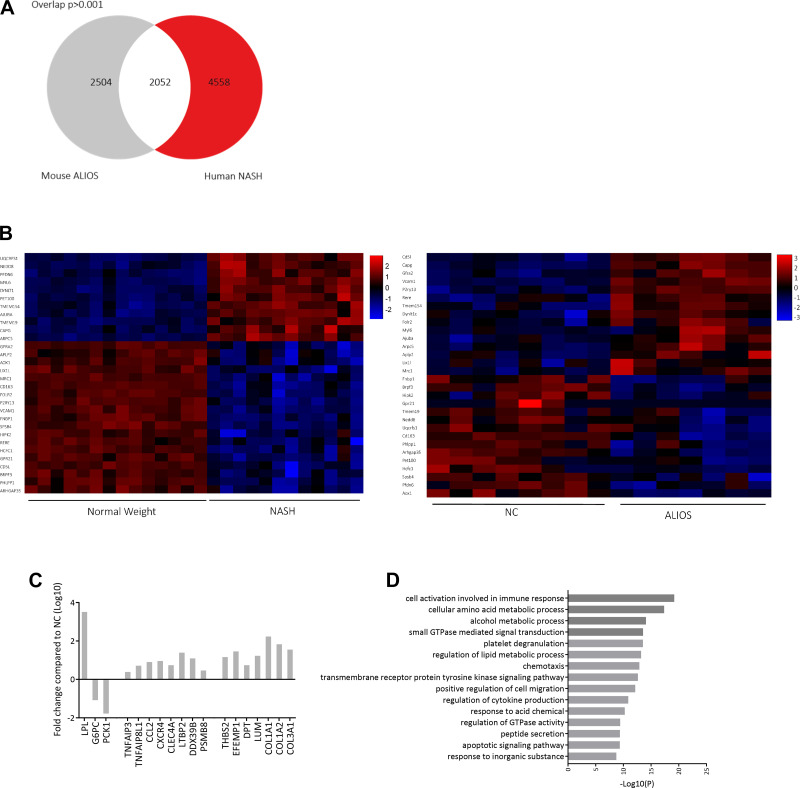Fig. 8.
A: American lifestyle-induced obesity syndrome (ALIOS) diet-fed male mice and human patients with nonalcoholic steatohepatitis (NASH) share 22.5% of differentially expressed genes (DEGs). Numbers in Venn diagram represent genes. B: hierarchical clustering analysis of the top 30 DEGs from human NASH and ALIOS-fed male mice. Values are z-scores. Overlapping DEGs are associated with metabolism, inflammation, and cell adhesion [genes are expressed as fold changes in log10 compared with normal chow (NC); C], and gene ontology of the top 100 overlapping DEGs shows associations with alterations in metabolic pathways, immune response, and cell adhesion (D). Pathways are ranked by P values.

